"Nothing you write can be wrong!"
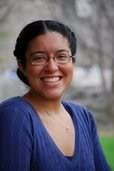 That's the philosophy of award-winning author Kekla Magoon—wouldn't you love to be in her creative writing class? I'm so happy to host her here at my blog—Kekla's a *very* busy woman so I'm very grateful she took the time to answer a few questions about her writing life.
That's the philosophy of award-winning author Kekla Magoon—wouldn't you love to be in her creative writing class? I'm so happy to host her here at my blog—Kekla's a *very* busy woman so I'm very grateful she took the time to answer a few questions about her writing life.
1. Most people know about your award-winning debut novel, The Rock and the River, but you've written a number of non-fiction books as well. Can you tell us about your writing history and how you select and/or develop new projects?
The first books I published, back in 2007, were non-fiction books for the educational market. I contributed about eight titles to a series published by ABDO for middle school libraries. The series had three categories: Essential Lives (biographies), Essential Events (a study of important world history moments), and Essential Viewpoints (a balanced introduction to controversial issues). The publisher developed a list of titles that would be included in each series, so I didn't choose the topics for these books, but sometimes I was offered a choice of which titles I wanted to write. I tended to choose topics related to civil rights (NELSON MANDELA), women's issues (SALEM WITCH TRIALS), and arts or writing (MEDIA CENSORSHIP). All the books had a history component to them, too, which is right up my alley. These for-hire projects were very helpful for me financially for several years as I made the transition from traditional employment to being a full-time author and speaker.
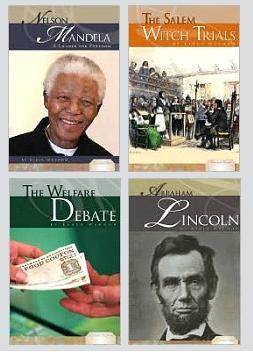 I also am grateful to have had that structured experience writing non-fiction, because I am now looking to do more non-fiction titles of my own creation. I am particularly interested in history, and what I know best is Black History, so I have turned my attention to that for now. This spring, my first royalty-based non-fiction project is coming out from Lerner Publishing. It's called TODAY THE WORLD IS WATCHING YOU and is about the Little Rock Nine, the first black students to integrate Central High School in Little Rock, Arkansas in 1957. It was shortly after the Supreme Court's Brown vs. Board of Education decision ruled school segregation unconstitutional. The Little Rock Nine faced a year of violent torment in school and strong community backlash, and they helped pave the way for generations of black students to be educated alongside white students. It's an amazing story!
I also am grateful to have had that structured experience writing non-fiction, because I am now looking to do more non-fiction titles of my own creation. I am particularly interested in history, and what I know best is Black History, so I have turned my attention to that for now. This spring, my first royalty-based non-fiction project is coming out from Lerner Publishing. It's called TODAY THE WORLD IS WATCHING YOU and is about the Little Rock Nine, the first black students to integrate Central High School in Little Rock, Arkansas in 1957. It was shortly after the Supreme Court's Brown vs. Board of Education decision ruled school segregation unconstitutional. The Little Rock Nine faced a year of violent torment in school and strong community backlash, and they helped pave the way for generations of black students to be educated alongside white students. It's an amazing story!
Next, I am developing a proposal for a non-fiction book on the Black Panther Party for teenagers. It will connect well with THE ROCK AND THE RIVER, and my forthcoming companion novel, FIRE IN THE STREETS. It is very important to me to have such untold narratives from history begin to be shared more with young people.
2. Ella's biracial identity isn't necessarily central to the story in Camo Girl. Talk about your decision as a biracial woman to write about a biracial girl and how your novel "fits" (or not) with other narratives about mixed-race women.
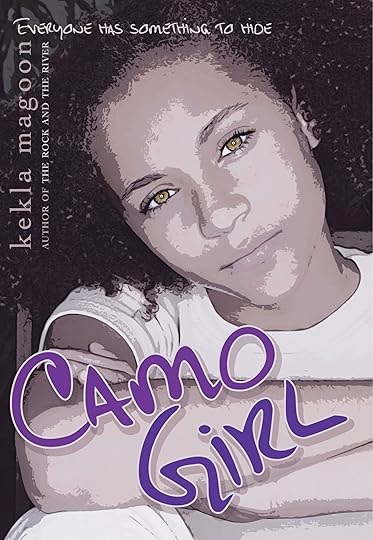 I'm not sure I have a good answer to how CAMO GIRL fits with other mixed-race narratives. Sometimes it's hard to analyze one's own work in those terms, although I do give thought to the place my books might take in the canon of children's literature. I feel it's important for many of my characters to be women of color, but I didn't want to write a story about a girl torn between two races, or heavily struggling with identity on racial grounds. I was hoping to paint a more nuanced picture of what it can mean to be a mixed-race person. In the end, I believe I made her biracial because I am biracial.
I'm not sure I have a good answer to how CAMO GIRL fits with other mixed-race narratives. Sometimes it's hard to analyze one's own work in those terms, although I do give thought to the place my books might take in the canon of children's literature. I feel it's important for many of my characters to be women of color, but I didn't want to write a story about a girl torn between two races, or heavily struggling with identity on racial grounds. I was hoping to paint a more nuanced picture of what it can mean to be a mixed-race person. In the end, I believe I made her biracial because I am biracial.Even though CAMO GIRL is only my second published novel, it's about the sixth novel manuscript that I've personally worked on (some are forthcoming, others are unfinished). Not all the characters in those projects are black or biracial. I'm sharing that because I want to be clear that I've written a fair amount, so it will make more sense when I say that Ella is the character who seems most like me of all the characters I've created. She is NOT me, of course, but I did make a conscious effort to place some of my experiences and perspectives into her. I'm a reasonably self-confident person and I never suffered the extreme social exclusion that Ella faces in the novel. However, her sense of being different and her longing for new friendships are part of my memory of myself in middle school. For those reasons, this novel touches me more personally, and I hope that as such it can let some young struggling girls (of any race) know that there is something beautiful to see when they look in the mirror.
3. I know you're passionate about writing and love being in the classroom. How do you teach someone to become a better writer?
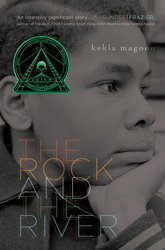 Yes, I do enjoy teaching writing, both to children and adults. With very young children, it's mostly a matter of encouraging them to keep writing and to celebrate their ability to pour creativity into everything. All their writing has energy and honesty and voice. At that point, all they need is time to develop vocabulary, gain life experience, and make observations about it. What I fear happens as kids get older is they begin to doubt their individual voice, which causes them to suppress some of those creative urges. They learn to self-edit in a way that is sometimes too extreme. Teen years are already a vulnerable time, even if you do nothing to explicitly expose yourself; creative expression only compounds that sensitivity. So I think positive reinforcement is key with teenagers, and can be the foundation that will help them grow into successful lifelong writers, if they choose to follow that route. I believe that a person who is confident in her/his voice and who believes s/he has something important to say will be able to develop far better writing skills over time.
Yes, I do enjoy teaching writing, both to children and adults. With very young children, it's mostly a matter of encouraging them to keep writing and to celebrate their ability to pour creativity into everything. All their writing has energy and honesty and voice. At that point, all they need is time to develop vocabulary, gain life experience, and make observations about it. What I fear happens as kids get older is they begin to doubt their individual voice, which causes them to suppress some of those creative urges. They learn to self-edit in a way that is sometimes too extreme. Teen years are already a vulnerable time, even if you do nothing to explicitly expose yourself; creative expression only compounds that sensitivity. So I think positive reinforcement is key with teenagers, and can be the foundation that will help them grow into successful lifelong writers, if they choose to follow that route. I believe that a person who is confident in her/his voice and who believes s/he has something important to say will be able to develop far better writing skills over time.Why? Because a confident writer will learn to accept criticism without taking it personally.
I see writing as a two-fold process: it is simultaneously a personal creative act, and an attempt to communicate. On one side, an author has something to say that s/he feels passionate about. On the other, s/he wants someone to understand that idea and embrace it. I believe the best critical feedback is targeted solely at the second half of that equation. A good teacher won't try to change or criticize what the student writer's core message or story is, but simply provide tools by which the student can improve how s/he communicates. This is why a writer who believes in her/his voice will grow more than one who is insecure, because (perhaps subconsciously) s/he will be able to separate criticism of style vs. substance.
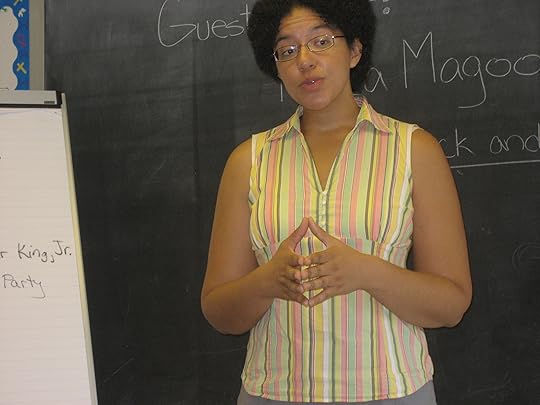
How do I personally strive to make confidence happen for my students? Well, it's a work in progress. As I'm often a guest author, I see my role as inspirer, uplifter. I only give positive feedback. There are no wrong answers in my workshops, ever. Most kids write mostly for school, where there are a lot of rules to writing, like spelling, grammar, and sentence structure. This is necessary training for life but it can get restrictive, and it makes kids feel like there's a right way to write. One of my favorite writing workshops that I offer is called WordPLAY! because I encourage my students to try writing without rules, without purpose, just for fun. The idea is to loosen them up and shake them out of the structures of school writing–the five paragraph paper, the book report, the essay exam, and so on. Spelling errors? Bring them on. Made up words? Why not? They get very creative, and then later we talk about how professional writers do a lot of editing of their work after the first draft. I still try to emphasize that "Nothing you write can be wrong!" (my workshop slogan), but that doesn't mean you can't look for a way to say what you want to say a little bit better.











